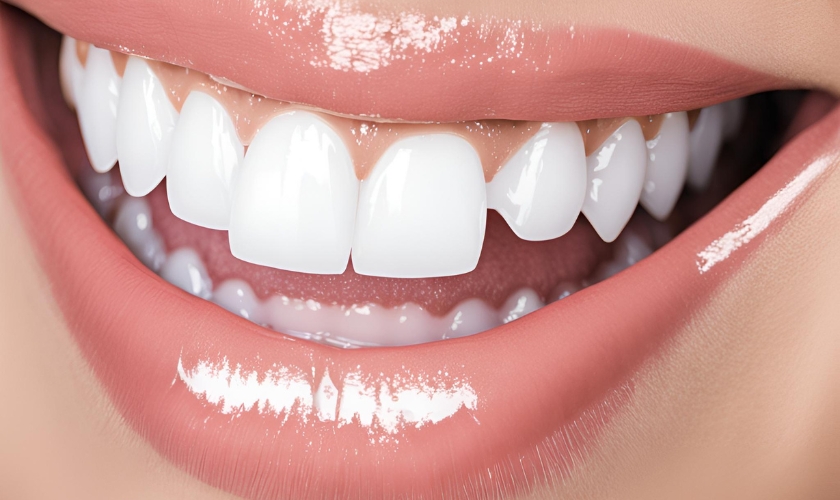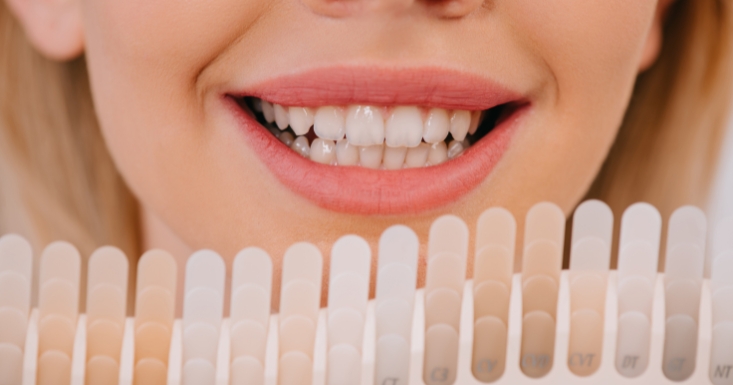
Dental bonding is a widely used cosmetic treatment for correcting imperfections like chipped or discolored teeth. It offers quick aesthetic improvements but presents unique challenges for teeth whitening. Unlike natural teeth, this tooth-bonding material does not respond to whitening treatments, which can lead to uneven results and mismatched colors. This discrepancy can make it difficult to achieve a uniformly bright smile.
In this blog, we’ll provide practical tips for whitening your teeth while considering the specific needs of those with bonding. Our aim is to help you maintain a bright and consistent smile, ensuring that your bonding work complements your overall appearance despite the challenges posed by whitening treatments.
Dental Bonding and Teeth Whitening
How Dental Bonding Differs from Natural Teeth?
The bonding procedure involves applying a tooth-colored resin to teeth to correct issues like discoloration, gaps, or chips. Unlike natural tooth enamel, the resin used in bonding does not change color when exposed to whitening products. If you whiten your natural teeth, this can lead to a mismatch in color between your bonded areas and the rest of your teeth. Therefore, it’s essential to approach whitening with caution and proper planning.
Impact of Whitening on Bonded Teeth
When you whiten your natural teeth, the results will not affect the color of bonding. This discrepancy can cause a noticeable difference between the whiteness of your natural teeth and the bonded areas. Additionally, some whitening treatments can affect the adhesive used in bonding, potentially compromising its integrity. Therefore, it’s crucial to use whitening methods that are safe and effective for your specific situation.
Whitening Tips for Patients with Dental Bonding
Consult Your Dentist
Before starting any whitening regimen, consult your dentist. They can evaluate your bonding and recommend the best approach for whitening your natural teeth while preserving the appearance of your bonded areas. Your dentist can provide professional whitening treatments that are tailored to your needs, ensuring that your smile remains consistent and attractive.
Choose the Right Whitening Method
Select a whitening method that is compatible with your bonding. For example, professional in-office whitening treatments are often more controlled and effective than over-the-counter products. Your dentist can use advanced techniques to ensure that your natural teeth are whitened evenly without affecting the bonded areas. If you opt for at-home whitening kits, choose products that are gentle and recommended by your dentist.
Maintain Good Oral Hygiene
Keeping up with good oral hygiene is imperative for maintaining the brightness of your teeth and the integrity of your bonding. Brush your teeth at least twice a day with fluoride toothpaste and floss daily to prevent stains and plaque buildup. Frequent dental check-ups are also important to monitor the condition of your bonding and ensure that your whitening treatment does not adversely affect it.
Use Whitening Toothpaste
Using whitening toothpaste might help you keep your natural teeth brilliant. These toothpastes contain mild abrasives and chemical agents that can help remove surface stains. However, they will not change the color of the bonding. Use whitening toothpaste in conjunction with other whitening methods to keep your teeth looking their best while protecting your bonding.
Avoid Staining Foods and Drinks
Some meals and beverages can discolor your teeth and bonding. After whitening, be particularly cautious about consuming coffee, tea, red wine, and other staining substances. Maintaining a diet low in staining agents can help keep your smile bright and prevent your bonding from discoloring. If you do consume these items, keep in mind to brush your teeth soon after.
Consider Bonding Replacement or Touch-Ups
If you’ve whitened your natural teeth and find that your dental bonding no longer matches, consider discussing touch-ups or replacement options with your dentist. Sometimes, it may be necessary to adjust the color of your bonding to match the new shade of your natural teeth. Your dentist can help you decide the best course of action to ensure a consistent, bright smile.
Be Cautious with DIY Whitening Solutions
While DIY whitening solutions can be tempting, they are not always safe or effective, especially for those with oral bonding. Some home remedies or over-the-counter products may contain ingredients that can damage bonding materials or lead to uneven whitening results. Always consult your Austin dentist before trying any new whitening procedures to verify they are safe for your dental work.
Maintaining a bright smile with bonding requires careful consideration and the right approach to teeth whitening. By consulting your dentist, choosing appropriate whitening methods, and maintaining good oral hygiene, you can achieve a bright, consistent smile while preserving the integrity of your bonding. Remember that dental bonding does not respond to whitening treatments the same way natural teeth do, so it’s crucial to follow professional advice and take steps to ensure your smile remains radiant. For personalized guidance and to explore options for teeth whitening, consult your dentist to keep your smile looking its best.
Frequently Asked Questions
To achieve even whitening, it’s best to consult your dentist before starting any whitening treatment. They can perform a professional whitening session and provide guidance on maintaining consistency in color. Additionally, you may need to have your dental bonding adjusted or replaced to match the new shade of your natural teeth.
While home remedies might seem like a cost-effective solution, they can be risky and may not be suitable for dental bonding. Ingredients in some DIY whitening solutions can damage the bonding material or lead to uneven results. Always consult your dentist before trying home remedies to ensure they are safe for your dental work.
While over-the-counter whitening products are generally safe for natural teeth, they may not be effective on dental bonding. For bonded teeth, it’s essential to use products recommended by your dentist. Professional treatments are often preferred because they can be tailored to your specific needs and minimize any potential impact on your bonding.


